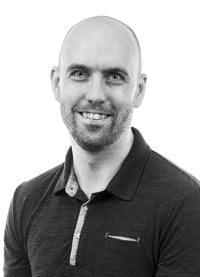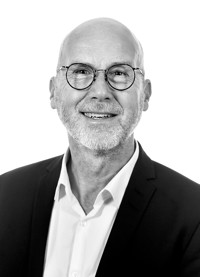Evaluation of top mattresses to prevent bedsores
Bedsores are common among patients and have major consequences for patients as they are painful and require prolonged care and treatment.
PROJECT PERIOD
Start: August 2017
End: 8 November 2018
In the worst cases, bedsores can lead to life-threatening infections, reduced mobility and amputations, and according to a report from the Danish Ministry of Health, hospitalisation among patients with bedsores in hospitals is on average 37% longer than for patients without. Bedsores thus result in large financial costs.
So far, the hospitals in the Region of Southern Denmark have used alternating pressure mattresses to prevent bedsores, but the project investigated whether static top mattresses could be a cheaper solution with the same clinical effect. In the autumn of 2017, two types of static top mattresses were tested in the Department of Geriatric Medicine and Department of Orthopaedics and Traumatology at Odense University Hospital and Svendborg Hospital (OUH) and a health technology assessment (HTA) was initiated.
AIM
The health technology assessment was to assess the preconditions for and consequences of using Stimulite and Tempur top mattresses as a replacement for alternating pressure mattresses for patients with a medium-high risk of developing bedsores in the two departments at OUH. The focus of the HTA was on static top mattresses for the prevention of hospital-acquired bedsores.
ASSESSMENT
The evaluation showed that static top mattresses for many patients are just as good at preventing bedsores as the alternating pressure mattresses. In addition, patients find it easier to move on the static top mattresses compared to the alternating pressure mattresses. According to the project results, approximately one third of OUH’s alternating pressure mattresses can be replaced with top mattresses. The economic analysis shows a saving of DKK 1,9-2,6 million for OUH and DKK 5,2-7,1 million for the entire Region of Southern Denmark over a period of four years. Any organisational costs are not included.
The HTA was based on a systematic literature review and primary data collection from an observational study at the Department of Orthopaedics and Traumatology and the Department of Geriatric Medicine at OUH.
PARTNERS
The HTA was prepared by the Department of Plastic Surgery as well as by the HTA unit at OUH.
EXTERNAL FUNDING
The HTA was financed by the Region of Southern Denmark’s HTA fund.

Mette Bøg Horup
HTA Consultant
Odense University Hospital, Dept. of Clinical Development - Innovation, Research & HTA
(+45) 2446 0772 mette.bog@rsyd.dk

Tue Kjølhede
Senior Consultant, PhD
Odense University Hospital, Dept. of Clinical Development - Innovation, Research & HTA
(+45) 5152 6692 tue.kjolhede@rsyd.dk

Kristian Kidholm
Professor, Head of Research
Centre for Innovative Medical Technology (CIMT). Odense University Hospital, Dept. of Clinical Development - Innovation, Research & HTA
(+45) 6541 7960 kristian.kidholm@rsyd.dk
